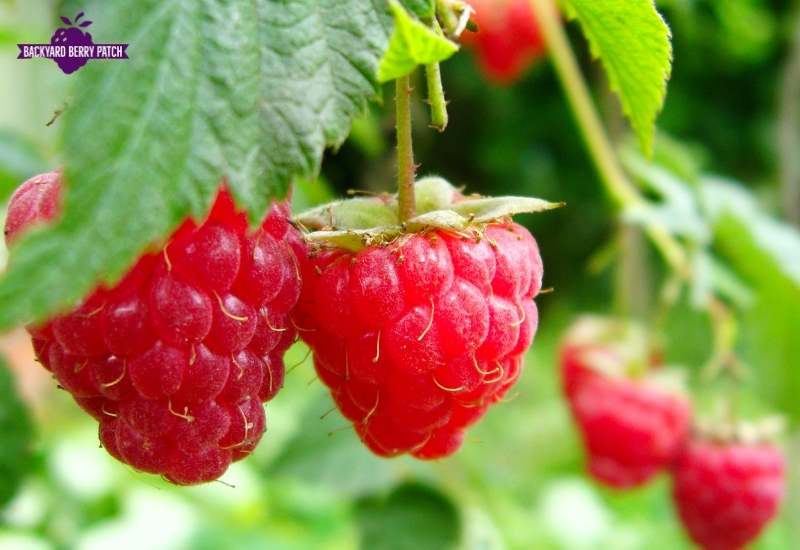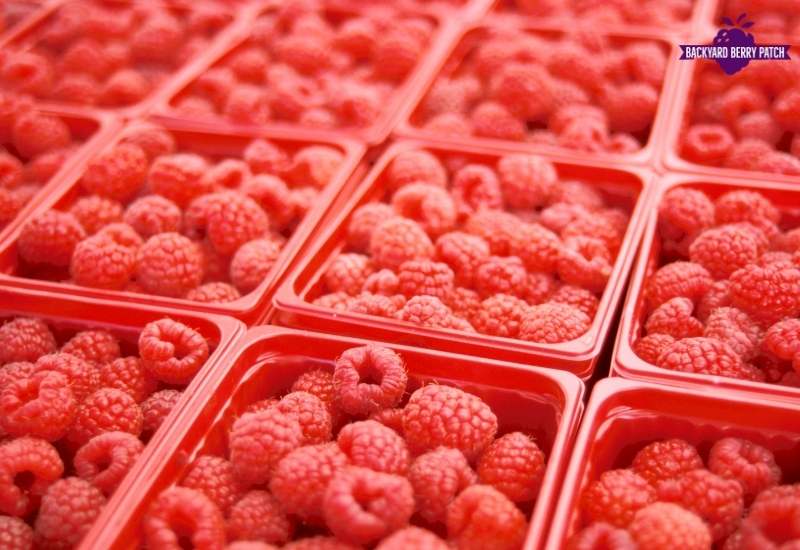Growing raspberries in California can be a fun and rewarding experience. These tasty berries are packed with vitamin C, which helps boost your immune system. Plus, you can enjoy fresh raspberries right from your own backyard!
The best raspberry varieties for California gardens include Bababerry and Oregon 1030.
They can tolerate the heat in southern and central valleys. Other types do well in cooler coastal areas. With the right care, your raspberry plants can give you large yields for 10 to 15 years or more.
Want to get started growing raspberries?
It’s easier than you might think. You just need to pick the right spot, prepare the soil, and follow some simple gardening tips. Soon, you’ll be enjoying sweet, juicy raspberries from your very own plants.
California Climate And Soil Overview
California’s diverse climate offers both challenges and opportunities for growing raspberries. You’ll find that coastal areas are ideal, with cool temperatures and mild winters. The central and northern California coast provides the best conditions for most raspberry varieties.
In hotter inland areas, you might need to provide afternoon shade for your plants. The Central Valley can be tricky, but with some care, you can still grow raspberries successfully.
When it comes to soil, raspberries prefer:
- Well-draining soil
- pH between 5.5 and 7.0
- Loamy or sandy loam texture
You’ll want to prepare your soil with compost or well-rotted manure before planting. This improves drainage and adds nutrients your raspberries will love.
Mulching is your friend! It helps retain moisture, suppress weeds, and keep roots cool. Apply a 2-3 inch layer around your plants, but avoid piling it against the stems.
Remember, raspberries need regular watering. Keep the soil moist but not waterlogged. In hot areas, you might need to water more frequently.
Pests can be a nuisance, but good air circulation helps. Plant your raspberries with enough space between them and consider a trellis system for support.

Recommended Thornless Raspberry Varieties
If you’re looking for raspberries without the prickles, you’re in luck! There are several thornless varieties that grow well in California.
The Canby raspberry is a popular choice. It’s easy to grow and produces sweet, red berries.
Another great option is the Joan J variety. This everbearing raspberry gives you fruit twice a year – in summer and fall.
Want something different? Try the Golden Raspberries! The Fall Gold variety offers sweet, yellow berries that are a treat for the eyes and taste buds.
Here’s a quick list of other thornless or nearly thornless varieties to consider:
- Raspberry Shortcake (perfect for containers)
- Glencoe
- Polka (very few small thorns)
- Nova (almost thornless)
Remember, even thornless varieties need proper care. Prune your primocanes (first-year canes) and floricanes (second-year canes) regularly to keep your plants healthy and productive.
While not completely thornless, the Bababerry is worth mentioning. It’s one of the few varieties that can handle the heat in California’s southern and central valleys.

Recommended Thorny Raspberry Varieties
If you’re looking to grow raspberries in California, there are several thorny varieties that thrive in the state’s climate. These plants can produce delicious berries and add a rustic charm to your garden.
One popular option is the Heritage raspberry. This variety is known for its hardiness and ability to produce fruit twice a year. You can expect a small crop in early summer and a larger harvest in fall.
Killarney raspberries are another great choice for California gardens. These summer-bearing plants produce sweet, bright red berries on floricanes. They’re perfect for fresh eating or making jams.
When planting raspberries, timing is key. Early spring is ideal, as it gives the plants time to establish before the hot summer months.
Make sure to choose a spot with well-draining soil and plenty of sunlight.
Here’s a quick guide to some thorny raspberry varieties:
- Heritage: Everbearing, produces in summer and fall
- Killarney: Summer-bearing, bright red berries
- Latham: Hardy, disease-resistant, good for colder areas
- Royalty: Purple berries, great for jams and preserves
Remember, thorny raspberries need regular pruning to stay healthy and productive. Cut back old canes in late winter while the plants are still dormant. This will encourage new growth and better fruit production.

Leave a Reply